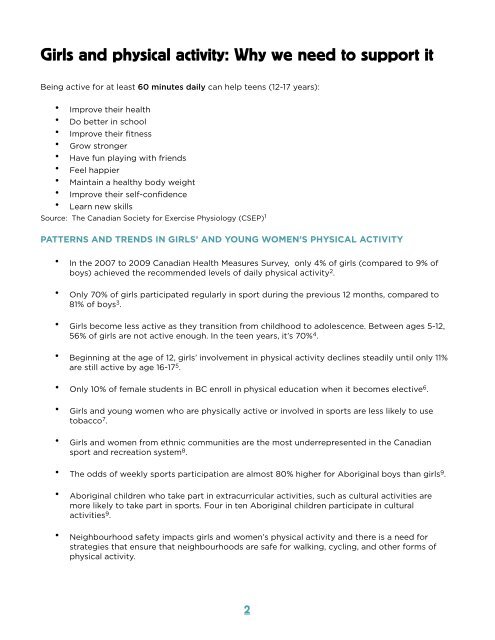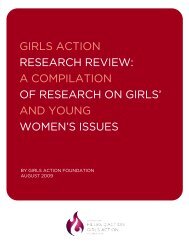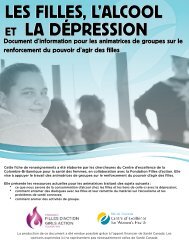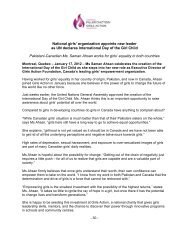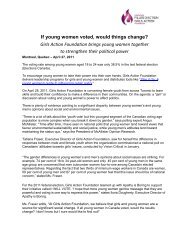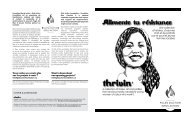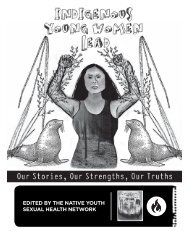physical activity - Girls Action Foundation
physical activity - Girls Action Foundation
physical activity - Girls Action Foundation
Create successful ePaper yourself
Turn your PDF publications into a flip-book with our unique Google optimized e-Paper software.
<strong>Girls</strong> and <strong>physical</strong> <strong>activity</strong>: Why we need to support it<br />
Being active for at least 60 minutes daily can help teens (12-17 years):<br />
• Improve their health<br />
• Do better in school<br />
• Improve their fitness<br />
• Grow stronger<br />
• Have fun playing with friends<br />
• Feel happier<br />
• Maintain a healthy body weight<br />
• Improve their self-confidence<br />
• Learn new skills<br />
Source: The Canadian Society for Exercise Physiology (CSEP) 1<br />
PATTERNS AND TRENDS IN GIRLS’ AND YOUNG WOMEN’S PHYSICAL ACTIVITY<br />
• In the 2007 to 2009 Canadian Health Measures Survey, only 4% of girls (compared to 9% of<br />
boys) achieved the recommended levels of daily <strong>physical</strong> <strong>activity</strong> 2 .<br />
• Only 70% of girls participated regularly in sport during the previous 12 months, compared to<br />
81% of boys 3 .<br />
• <strong>Girls</strong> become less active as they transition from childhood to adolescence. Between ages 5-12,<br />
56% of girls are not active enough. In the teen years, it’s 70% 4 .<br />
• Beginning at the age of 12, girls’ involvement in <strong>physical</strong> <strong>activity</strong> declines steadily until only 11%<br />
are still active by age 16-17 5 .<br />
• Only 10% of female students in BC enroll in <strong>physical</strong> education when it becomes elective 6 .<br />
• <strong>Girls</strong> and young women who are <strong>physical</strong>ly active or involved in sports are less likely to use<br />
tobacco 7 .<br />
• <strong>Girls</strong> and women from ethnic communities are the most underrepresented in the Canadian<br />
sport and recreation system 8 .<br />
• The odds of weekly sports participation are almost 80% higher for Aboriginal boys than girls 9 .<br />
• Aboriginal children who take part in extracurricular activities, such as cultural activities are<br />
more likely to take part in sports. Four in ten Aboriginal children participate in cultural<br />
activities 9 .<br />
• Neighbourhood safety impacts girls and women’s <strong>physical</strong> <strong>activity</strong> and there is a need for<br />
strategies that ensure that neighbourhoods are safe for walking, cycling, and other forms of<br />
<strong>physical</strong> <strong>activity</strong>.<br />
2


